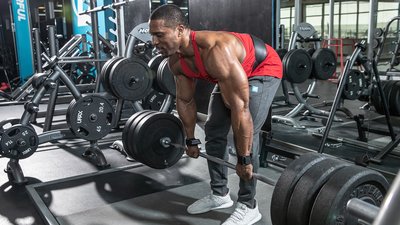Strength training appeals to people for different reasons, but let's be honest—everyone wants to look good naked, and no one wants to get injured. You've probably tried countless training programs looking to achieve your dream physique, yet you feel that something is missing. Maybe you're bench pressing 225 pounds, but your shoulder keeps bothering you; or you've added some inches to your biceps, but you're still being told to stop slouching so much; or you've seen improvements in your physique, but your lower back is giving you problems. Something is missing from your training.
Here's the deal: Nowadays, we sit more and are less active than ever. We're also less aware of body alignment and positioning during those long hours of commuting and sitting at the office. Our bodies, which are great at adapting to the stress we put on them, have become really good at sitting. Joints become stiff and less mobile, while some muscles become underactive or overactive.
As a result, most people demonstrate the following posture: forward head, rounded shoulders and upper back, tight lower back, stiff hips, and constantly tight hamstrings. This is damaging in terms of both performance and injury prevention, and it's definitely not an aesthetic look. You need to make your back muscles, glutes, and core stronger and the antagonist muscles looser.
Starting at a Disadvantage
Most training programs fail to take into consideration the postural starting point and how daily habits affect your posture. A typical hypertrophy program has a 1-1 ratio of pulling muscles, which are the posterior, or rear, muscles, to pushing muscles, the anterior, or front groups.
Additionally, like most trainees, you probably target your visible front muscles, such as pecs and biceps—more than your posterior chain. So, not only do you start training from a disadvantaged posture, but you're feeding into the problem by focusing on the wrong muscles.
Should you stop working on your anterior muscles completely and just focus on your posterior chain? The better fix is to add volume to your work on the muscles that require more love and attention while optimizing joint mobility.
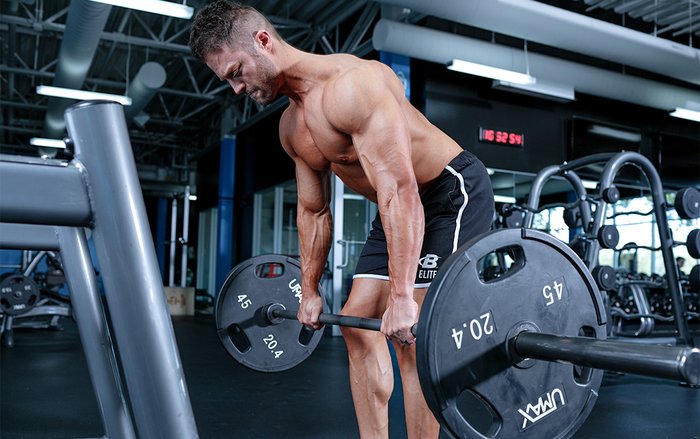
The program outlined here focuses on the muscles of the posterior chain, primarily the shoulder retractors and depressors, shoulder external rotators, glutes, and core muscles. It incorporates exercises from different angles and positions to stimulate different muscle fibers and promote full development.
The emphasis is on the inner-core unit—the transverse abdominis, deep erector spinae, multifidus, diaphragm, and the pelvic floor muscles, which stabilize the spine and pelvis by resisting movement. When your core musculature can stabilize effectively, it translates into better squats, deadlifts, bent-over rows, and other moves.
Preliminary Concerns
In general, I encourage you to move more throughout the day, and if you must sit for long hours at a desk, try changing your position every hour or so.

Pay attention to your posture—it all starts with awareness. Sit and stand tall, pull your head back to keep your neck neutral, keep your shoulder blades back and down, puff up your chest, extend your thoracic spine, and brace your core. It may feel unnatural at first, but it will get easier as you become stronger.
Make sure your setup at work allows for good posture. One trick when you're at your desk is to hold a tennis ball behind your back against the chair to remind you of your posture. Performing thoracic extensions while sitting at your desk can help, too.
Another factor to watch is your neck position. Your neck alignment should be neural, with your head pulled back and slightly extended, if it's comfortable for you.
Part 1: The Warm-up
This sample four-days-a-week program is designed to bring up the posterior-chain muscles and the core, improving your posture, strength, and aesthetics. Start with the following warm-up. Do it before each workout and on rest days, as well.
1. Soft-tissue work: for the pecs minor, lats, quads, and adductors.
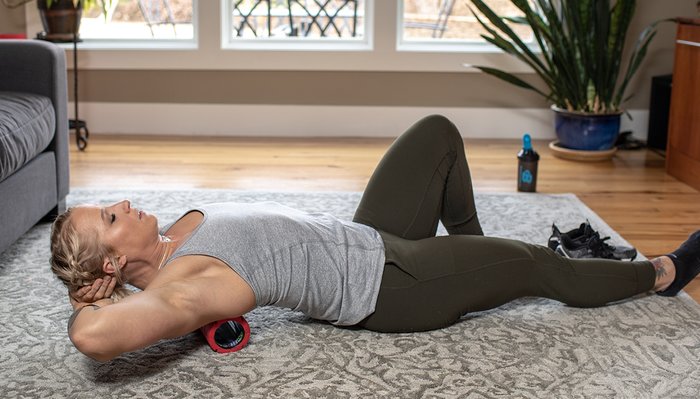
2. Stretches: for the levator scapulae, traps, pecs major and minor, subscapularis, lats, hip-flexors, quads, adductors, and calves.
3. Mobilization drills: the cat-cow to child's pose for the spine and pelvis; the knee-to-wall drill for the ankles; strider exercise, world's greatest stretch, 90-90 hip stretch, and adductor/groin stretch for the hips; and the T-spine foam roller extension and lying T-spine extension rotation stretch for the thoracic spine.
4. Activation exercises: wall slide, band pull-apart neutral-to-external rotation, and glute bridge, 1 set of 10-15 reps each
Part 2: The Strength Program
When it comes to muscle development, technique is key. Hire a professional coach if you're unsure of your exercise technique.

To target the back, focus on rowing variations from different angles, as well as shoulder external-rotation work. To target the glute muscles, focus on hip-hinge variations, as well as single-leg squat variations, bridges, and abduction work. To target the core muscles, focus on anti-movement variations; for example, anti-extension, anti-lateral rotation, and anti-rotation.
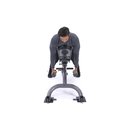
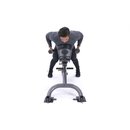
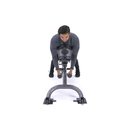
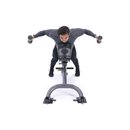
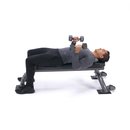
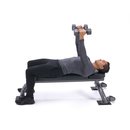


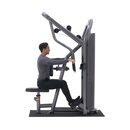
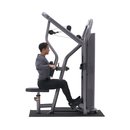
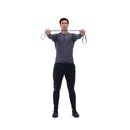
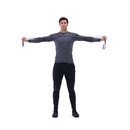
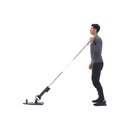

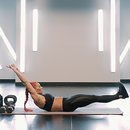
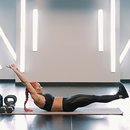
Day 2: Lower Body
- Barbell Romanian deadlift to below knee: 4 sets of 10-12 reps
Superset:
Reverse lunge with torso leaning forward: 3 sets of 10-12 reps
Seated band abduction: 3 sets of 15-20 reps
Single-leg hip thrust: 3 sets of 8-12 reps per leg
Pallof press: 2 sets of 5-8 breaths per side
Day 3: Upper Body
Superset:
- Seated bilateral high cable row: 4 sets of 10-12 reps
- Standing band W with ER: 4 sets of 12-15 reps
Superset:
- Pull-over: 3 sets of 12-15 reps
- Prone lower-trap raise: 3 sets of 12-15 reps
Superset:
- Alternating seal row: 3 sets of 8-10 reps
- Push-up: 3 sets of 12-15 reps
Superset:
- Behind-the-neck pull-apart with 2-sec. hold: 2 sets of 12-15 reps
- Long-lever breathing plank: for 1-2 sets
Day 4: Lower Body
- Barbell sumo deadlift to below knees: 4 sets of 8-10 reps
- Single-leg supported Bulgarian split squat to Romanian deadlift: 10-20 reps per leg over 4 sets
Superset:
Banded feet-elevated in-out-up glute bridge: 2 sets of 15-20 reps
Banded dead bug: 2 sets of 6-12 reps per leg
Suitcase carry: 2 sets of 1-1.5 min. per side
Want to lift big and be pain free while you do it? Learn the right way to warm up for your most important upper-body and lower-body sessions in Unstoppable: The Ultimate Guide to Training Through Injury, hosted by John Rusin, DPT, only in Bodybuilding.com BodyFit Elite.

